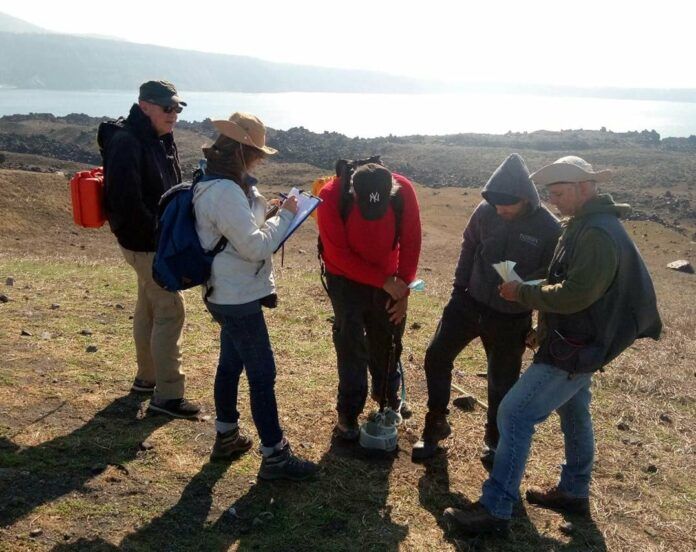From October 25 to 31, 2021, a team from the Hellenic Survey of Geology and Mineral Exploration (H.S.G.M.E.), in collaboration with the Institute for the Study and Monitoring of the Santorini Volcano (IMPHS), and scientists from the University of Florence and the Italian National Research Council, carried out the following research activities in Santorini:
- Installation of a new monitoring station for the continuous recording and real-time transmission of fumarole and ground temperatures at the summit of Nea Kameni. The monitoring station records and transmits the maximum temperature of the fumaroles of Nea Kameni, as well as the temperature at three points along a 30-meter eastward transect from the base fumarole, aiming to detect possible changes in the thermal state of the area.
- Sampling of the hot fluids emitted from the fumaroles and measurement of their physico-chemical parameters. The fluid sampling was carried out at four locations as part of the regular monitoring program conducted at least once a year. In the previous year (2020), sampling could not take place due to travel restrictions related to the COVID-19 pandemic. The collected samples are analyzed in laboratories in Italy, and the results are compared with those from previous years to determine whether they fall within the range of background (quiescent state) values of the volcano.
- Measurement of carbon dioxide emissions from the soil, both in the fumarolic and warm ground area at the summit of Nea Kameni, and in the areas of Thira intersected by the active volcanic-tectonic lines of Kolumbo and Kameni. These CO₂ flux measurements are also conducted annually at a predefined network of monitoring points, aiming to assess the volcano’s state of activity.
- Infrared camera imaging of the thermal state of the entire summit area of Nea Kameni. This thermal mapping is also carried out annually and shares the same goal as the previous activities.
The values obtained from all measurements fall within the range corresponding to the volcano’s quiescent state.
The H.S.G.M.E. team consisted of G. Vougioukalakis, A. Arvanitis, and Ch. Mylonas. The University of Florence was represented by Professor Orlando Vaselli, and the Italian National Research Council by Dr. Barbara Nisi.
This activity was carried out within the framework of the subproject “Actions for the Rational and Sustainable Utilization of Geothermal Energy – GEOTHERM” of the project “Studies and Research Supporting the Energy Sector of Industry and Entrepreneurship – OPYGEC”, implemented by the Department of Geothermal and Thermal Mineral Resources of H.S.G.M.E., specifically under the action “Long-Term Monitoring of Thermal Mineral Resources and Geothermal Fields in Greece.”









